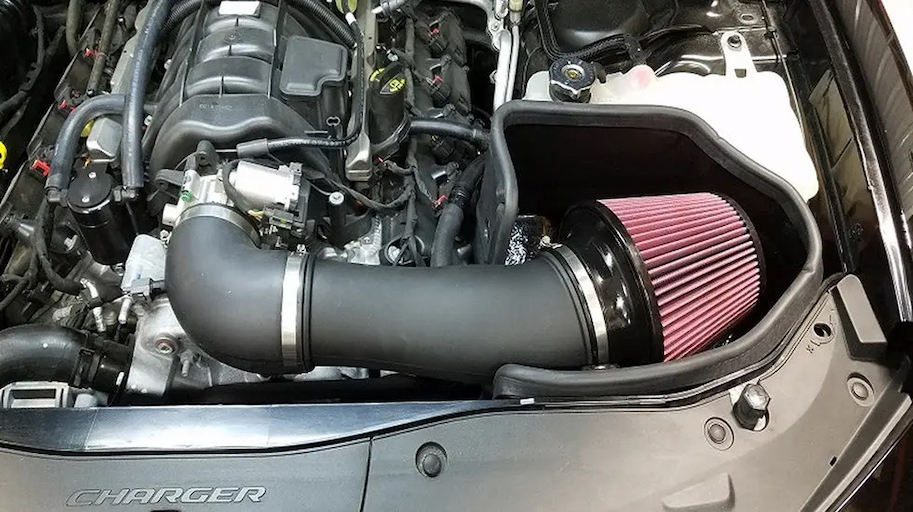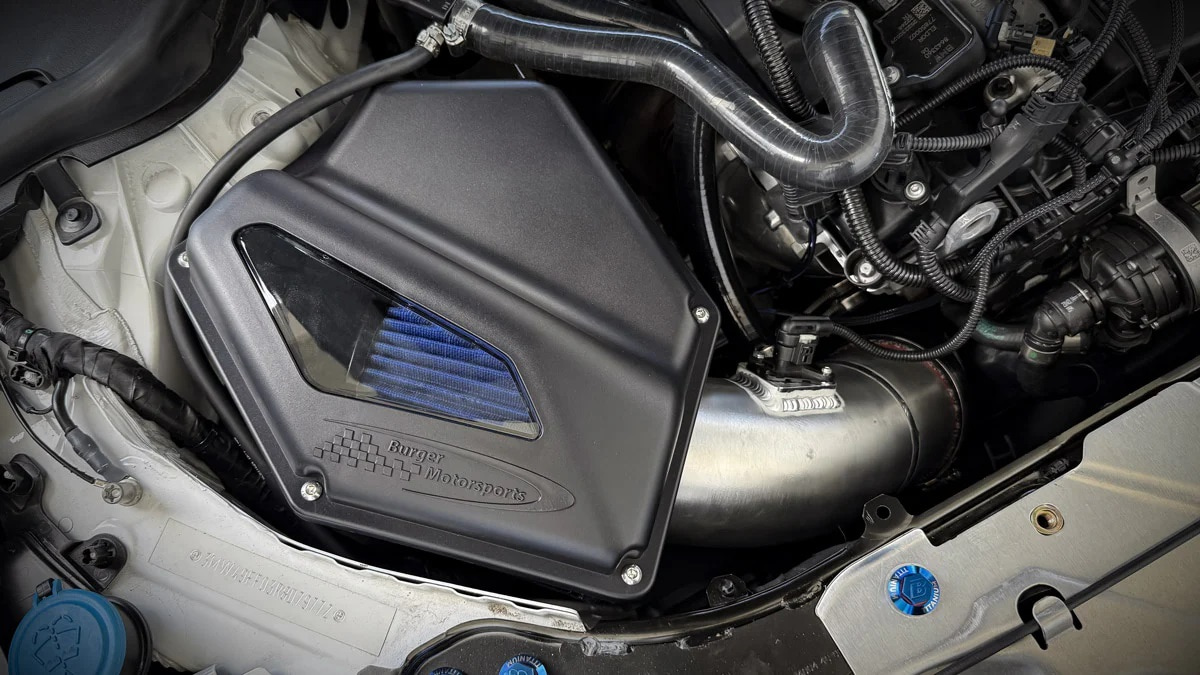Performance car upgrades come in different guises and not all of them will deliver the power boost that justifies the asking price. This side short of exorbitantly costly stroker kits, twin-scroll turbochargers or revised and strengthened internals, the surest way to increase power from a stock engine is to feed it more air. This means an air intake that scoops more oxygen-rich atmospheric air and crams it into the cylinders to produce bigger bangs.
Stock parts aren’t meant for outright performance, instead going with longevity and lower fuel use. For factory air intakes this also means cost-cutting measures, like cheap and restrictive air filters and piping that doesn’t exactly cope with the higher temperatures with the engine spinning at redlines. For real-world power and performance gains, a custom cold air intake system boosts engine efficiency by providing cooler and denser air for combustion, increasing the potential of every stock engine.
Common Parts and How Cold Air Intakes Work

Cold air intakes completely rework how air gets into the engine. They relocate the air filter (and air box) further away from hot engine parts like turbos and exhaust manifolds. Located further toward the front of the engine bay (near the bumper), reusable cone filters scoop higher volumes of cooled and oxygen-rich air to deliver increased combustion efficiency. This is half of the story.
The tubing is also reworked and sourced from heat-resistant materials like aluminum, steel and reinforced composite plastics, and laid out in straighter and wider paths to optimize airflow into throttle bodies or carbs. This is also often lined with a lightweight, yet effective heat shield to deflect radiant heat. The denser and cooler air reaching the cylinders is what provides the performance and power boost.
Benefits of Cold Air Intake Systems
Intakes and exhausts are the first modifications to stock engines if you’re really serious about substantial power gains. And they’re the foundation of all subsequent changes and additions to get a faster, more powerful car. Adding a cold intake designed specifically for your engine brings dozens of benefits:
- Improved airflow – The cold air intakes are designed with wider and straighter plumbing, and less restrictive filters and airboxes. Engines are fed high volumes of cool air and at optimal velocities and speeds.
- Increased power and torque – The main reason you’re thinking about this upgrade. Efficient airflow also increases combustion efficiency, meaning more power. Estimates are that a performance intake can add up to 30 horsepower, and widen powerbands for more torque lower and higher in the rev range.
- Faster, effortless acceleration – With the aftermarket intake fitted, you’ll instantly recognize the difference when putting your foot down. The car is more responsive to throttle input (due to reduce airflow restrictions), with the engine and car picking up speed faster. With the wider power band, auto transmissions also change gears later, holding more speed.
- Raspy engine sound – Like aftermarket exhausts, new intakes let the engine breathe, and you can hear this at idle and at redlines. There’s more substance and a growling engine note to make driving more fun.
- Fuel efficiency – While more air means more corresponding fuel (for optimal air/fuel ratios of 14.7:1), improved airflow, especially at lower engine revs can lead to lower fuel use. This is more evident at slower speeds and in heavy traffic, but also at highway speeds. Of course, the more you work the gas at anything above the speed limit, the more fuel the engine uses.
What to Look For When Buying
Filter designs, intake tube materials and engine compatibility are the three key factors when searching for a cold air intake Canada. Reusable, oiled cone filters have a larger surface area for increased air volumes and improved filtering. They push more cooler air in and remove finer particles, leading to reduced engine wear. Better built sealed filters also reduce the risk of hydrolocking, or water ingress that can seize pistons, connecting rods and other internals.
Metal or composite plastic tubing is stronger and more resistant to heat, impact and vibrations than stock rubber hoses. It also has fewer bends to improve air flow and velocity into the cylinders. Look for tubing with integrated heat shields to reduce intake air temperatures and boost efficiency.
Lastly, tube lengths, widths and layouts need to be compatible with the engine, and reduce the need for relocating other engine parts to ensure a clean fit. Aftermarket cold air intake manufacturers make this easy by ensuring parts are designed for specific engines. This also makes installation faster and easier.
Alternatives to Cold Air Intakes
With shorter tubing lengths, and less complex designs, short ram intakes are a good alternative in cars with limited space and smaller engine bays. While these lose out on the denser and cooler air, they still provide a rumbling engine sound, albeit with lower performance gains.
The trade off is the lower price and compatibility with more car makes and models. For outright power though, nothing beats a cold air intake. This boosts engine power, provides a more fun driving experience, and with quality parts and designs, reduces maintenance and regular air filter changes.
